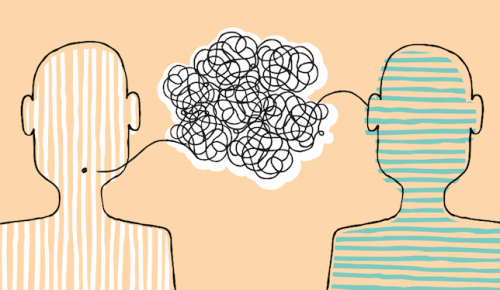Psychological Behaviorism by Arthur W. Staats

Psychological behaviorism posits that personality can be explained through observable behavior. Watson first developed behaviorism, the general theory that encompasses psychological behaviorism, in 1912. Skinner further expanded the theory with his radical behaviorism. The most recent approaches by Staats speak of psychological behaviorism, which emphasizes a person’s personality and inner world.
Arthur W. Staats’ psychological behaviorism extends behaviorism to the field of psychology. Consequently, it postulates that we can explain psychology through observable behaviors. The components of psychology include personality, learning, and emotions.
In this sense, Staats was the first person to propose that personality consists of a repertoire of learned behaviors. These behaviors stem from the interactions between the environment, biology, cognition, and emotions. This personality theory is the main component of psychological behaviorism and distinguishes it from the behaviorism theories that came before it.
Psychological behaviorism and personality
According to Staats, three behavioral repertoires make up a personality theory:
- First, the sensory-motor repertoire, which includes sensory-motor skills and attentional and social skills.
- Second, the cognitive-linguistic repertoire.
- Third, the emotional-motivational repertoire.
At birth, an infant lacks all of these repertoires. As they grow, they acquire them through complex learning and becomes capable of handling various situations. An individual experiences life according to their baggage and develops a basic behavioral repertoire.

An individual’s basic behavioral repertoire and their life experiences will shape their behavior and, consequently, their personality. According to this model, biology interacts with the environment and contributes to the formation of personality.
On the other hand, psychological behaviorism considers that the study of personality is very important. Personality tests are essential and should allow professionals to predict what behaviors people will manifest and if they’ll be at risk.
These tests also help identify the behaviors and contexts that promote them. In turn, this helps to create environments that produce desired behaviors. Likewise, they also prevent the development of undesired behaviors.
Psychological behaviorism and education
Psychological behaviorism argues that, as children develop, they learn basic repertoires on which other more complex repertoires are built. This is called cumulative learning. According to psychological behaviorism, this learning is exclusive to humans.
According to this cumulative learning model, when children learn a repertoire such as language, they can then build on that repertoire with other repertoires, such as reading and grammar. And those reading and grammar repertoires lead to the acquisition of more complex repertoires.
Staats’ research emphasizes the importance of parenting. In particular, he showed that teaching children language and cognitive development at an early age led to more advanced language development. This also led to better intelligence levels in intelligence tests. Many studies have supported his findings.
Psychological behaviorism and language
Staats indicates that many words provoke positive or negative emotional responses. Psychological behaviorism also states that emotional words have two additional functions. First of all, they help learn other behaviors. Second, they also provoke approximation or avoidance behaviors.
Psychological behaviorism studies various aspects of language. For example, this article by Staats that was published in the journal Behavior Therapy in 1972 helped introduce cognitive behavioral therapy (language) in the field of behavior.

Psychological behaviorism and behavioral disorders
Psychological behaviorism doesn’t accept the concept of mental illness. Instead, it argues that learned abnormal behavior repertoires lead to behavioral disorders. A lack of important learned repertoires that could help the individual handle situations better can also lead to behavioral disorders.
In fact, psychological behaviorism rejects the concept of mental illness and states that behavioral disorders are caused by a lack of assimilation of the basic repertoires that individuals need.
Therefore, psychological behaviorism suggests that behavioral associations can be used to treat behavioral disorders. It also suggests prevention by identifying and blocking the conditions that lead to them.
Psychological behaviorism posits that personality can be explained through observable behavior. Watson first developed behaviorism, the general theory that encompasses psychological behaviorism, in 1912. Skinner further expanded the theory with his radical behaviorism. The most recent approaches by Staats speak of psychological behaviorism, which emphasizes a person’s personality and inner world.
Arthur W. Staats’ psychological behaviorism extends behaviorism to the field of psychology. Consequently, it postulates that we can explain psychology through observable behaviors. The components of psychology include personality, learning, and emotions.
In this sense, Staats was the first person to propose that personality consists of a repertoire of learned behaviors. These behaviors stem from the interactions between the environment, biology, cognition, and emotions. This personality theory is the main component of psychological behaviorism and distinguishes it from the behaviorism theories that came before it.
Psychological behaviorism and personality
According to Staats, three behavioral repertoires make up a personality theory:
- First, the sensory-motor repertoire, which includes sensory-motor skills and attentional and social skills.
- Second, the cognitive-linguistic repertoire.
- Third, the emotional-motivational repertoire.
At birth, an infant lacks all of these repertoires. As they grow, they acquire them through complex learning and becomes capable of handling various situations. An individual experiences life according to their baggage and develops a basic behavioral repertoire.

An individual’s basic behavioral repertoire and their life experiences will shape their behavior and, consequently, their personality. According to this model, biology interacts with the environment and contributes to the formation of personality.
On the other hand, psychological behaviorism considers that the study of personality is very important. Personality tests are essential and should allow professionals to predict what behaviors people will manifest and if they’ll be at risk.
These tests also help identify the behaviors and contexts that promote them. In turn, this helps to create environments that produce desired behaviors. Likewise, they also prevent the development of undesired behaviors.
Psychological behaviorism and education
Psychological behaviorism argues that, as children develop, they learn basic repertoires on which other more complex repertoires are built. This is called cumulative learning. According to psychological behaviorism, this learning is exclusive to humans.
According to this cumulative learning model, when children learn a repertoire such as language, they can then build on that repertoire with other repertoires, such as reading and grammar. And those reading and grammar repertoires lead to the acquisition of more complex repertoires.
Staats’ research emphasizes the importance of parenting. In particular, he showed that teaching children language and cognitive development at an early age led to more advanced language development. This also led to better intelligence levels in intelligence tests. Many studies have supported his findings.
Psychological behaviorism and language
Staats indicates that many words provoke positive or negative emotional responses. Psychological behaviorism also states that emotional words have two additional functions. First of all, they help learn other behaviors. Second, they also provoke approximation or avoidance behaviors.
Psychological behaviorism studies various aspects of language. For example, this article by Staats that was published in the journal Behavior Therapy in 1972 helped introduce cognitive behavioral therapy (language) in the field of behavior.

Psychological behaviorism and behavioral disorders
Psychological behaviorism doesn’t accept the concept of mental illness. Instead, it argues that learned abnormal behavior repertoires lead to behavioral disorders. A lack of important learned repertoires that could help the individual handle situations better can also lead to behavioral disorders.
In fact, psychological behaviorism rejects the concept of mental illness and states that behavioral disorders are caused by a lack of assimilation of the basic repertoires that individuals need.
Therefore, psychological behaviorism suggests that behavioral associations can be used to treat behavioral disorders. It also suggests prevention by identifying and blocking the conditions that lead to them.
All cited sources were thoroughly reviewed by our team to ensure their quality, reliability, currency, and validity. The bibliography of this article was considered reliable and of academic or scientific accuracy.
- Carrillo, J. M., Collado, S., Rojo, N., & Staats, A. W. (2003). Personalidad, emociones y dolor. Clínica y Salud, 14(1).
- Staats, A. W. (1979). Conducta social y problemas sociales. Modificación de conducta: Aplicaciones sociales, 75-102.
- Staats, A. W., & tr Carrillo, J. M. (1997). Conducta y personalidad: Conductismo psicológico.
- Staats, A. W. (1979). El conductismo social: un fundamento de la modificación del comportamiento. Revista Latinoamericana de psicologia, 11(1).
This text is provided for informational purposes only and does not replace consultation with a professional. If in doubt, consult your specialist.







